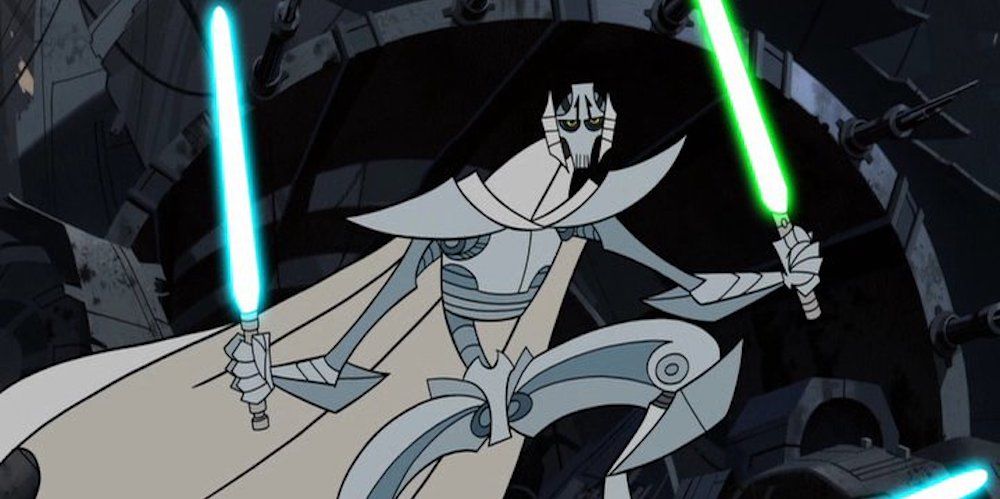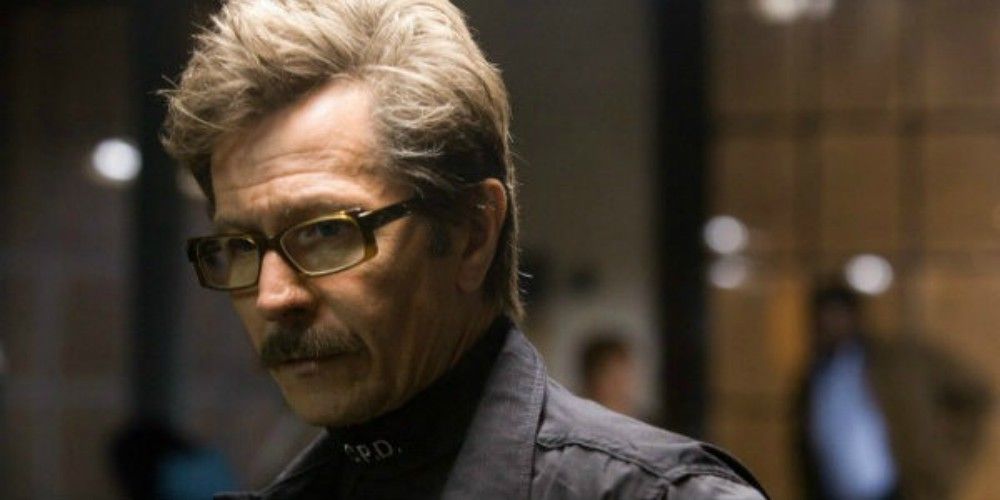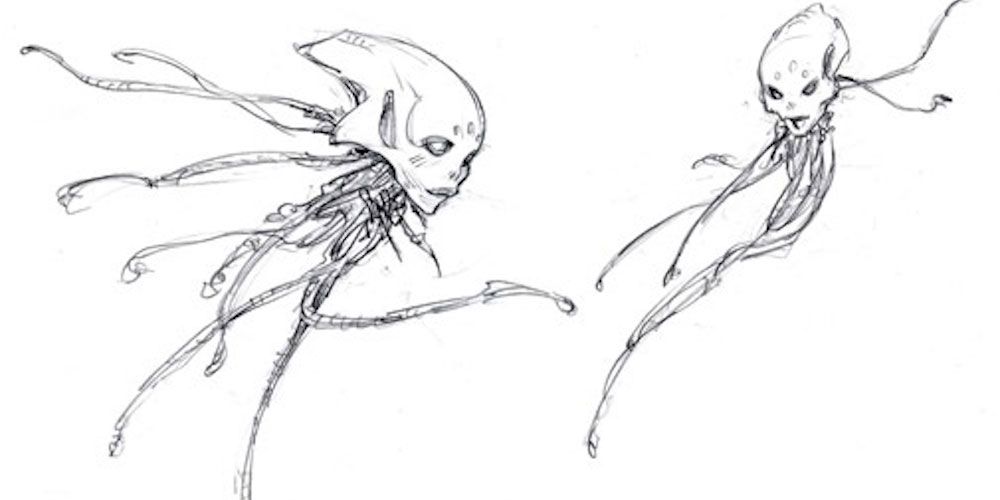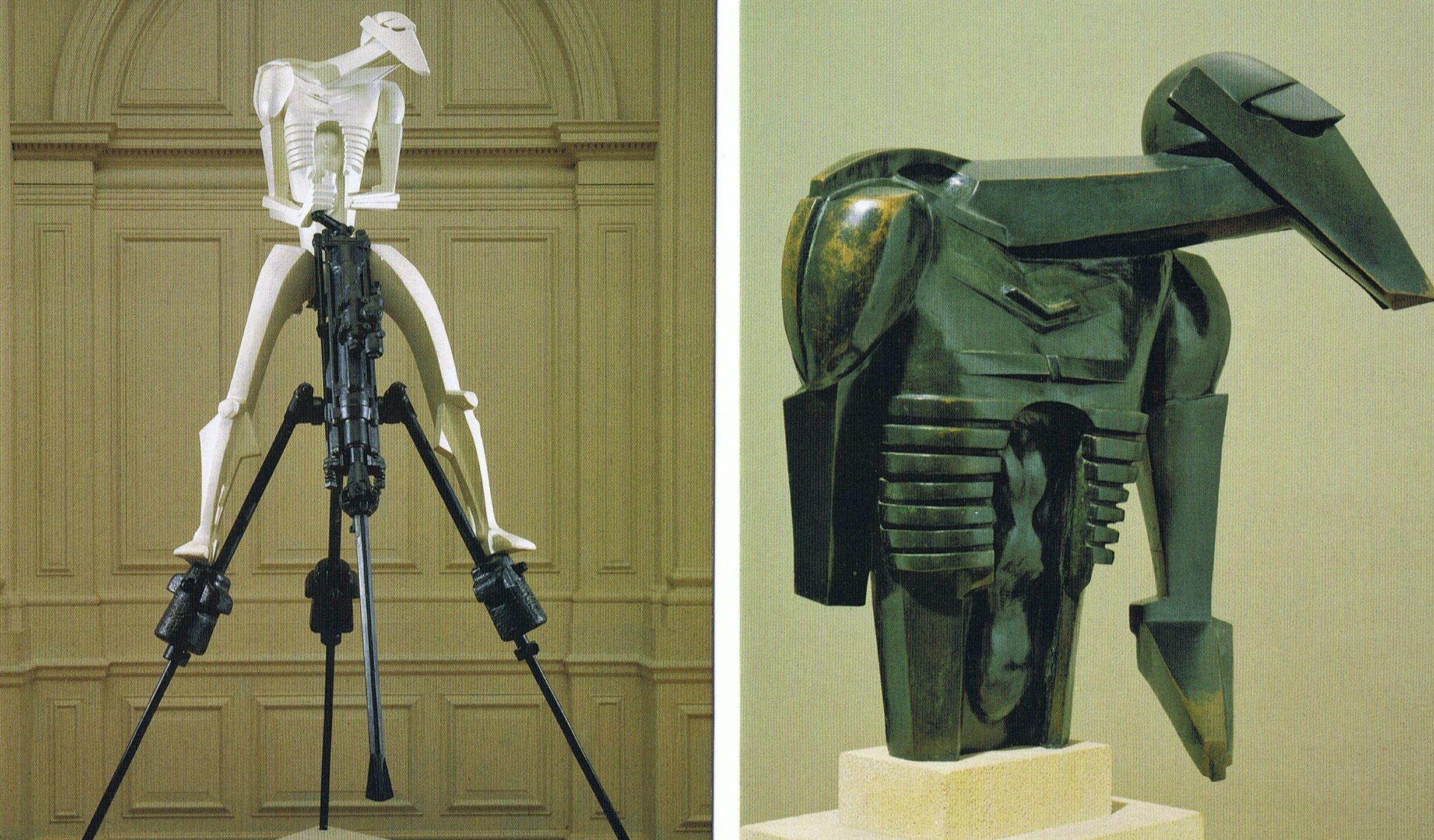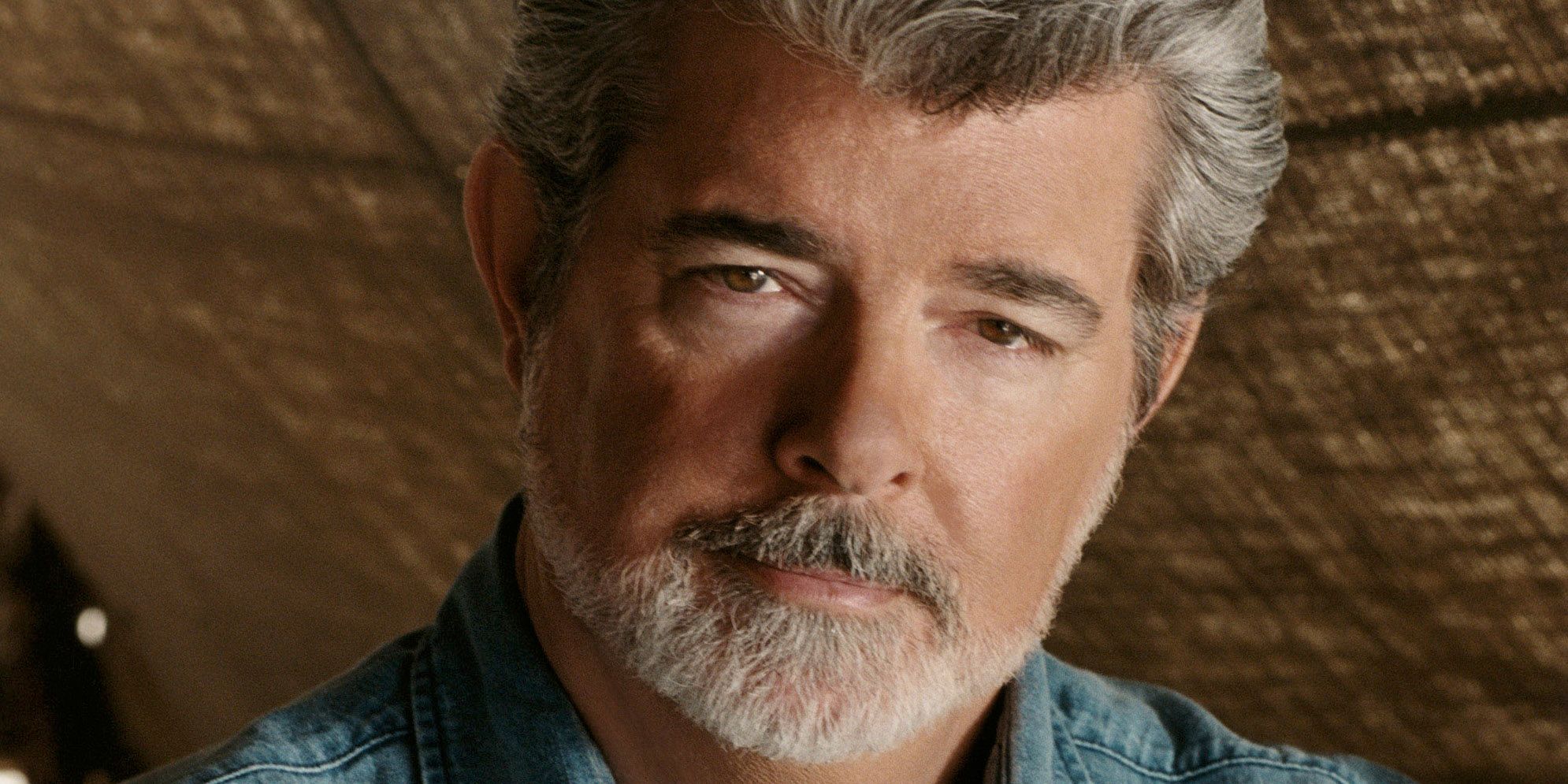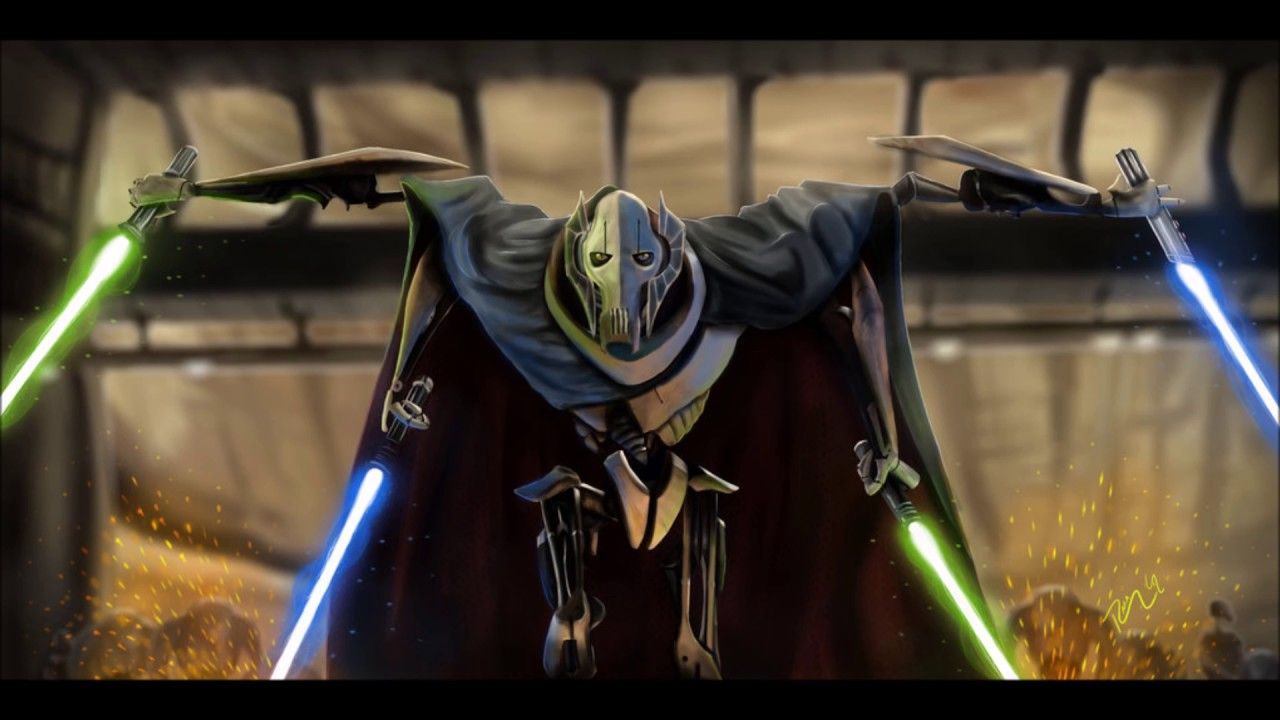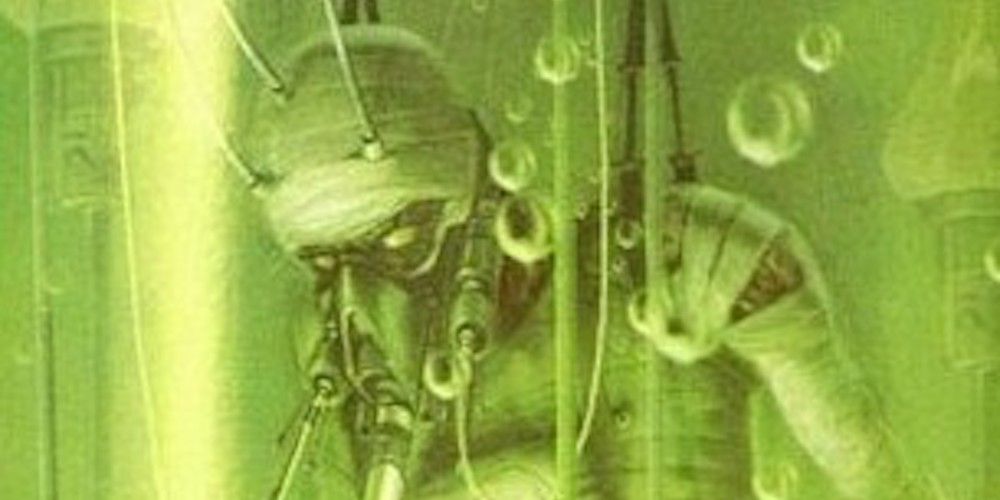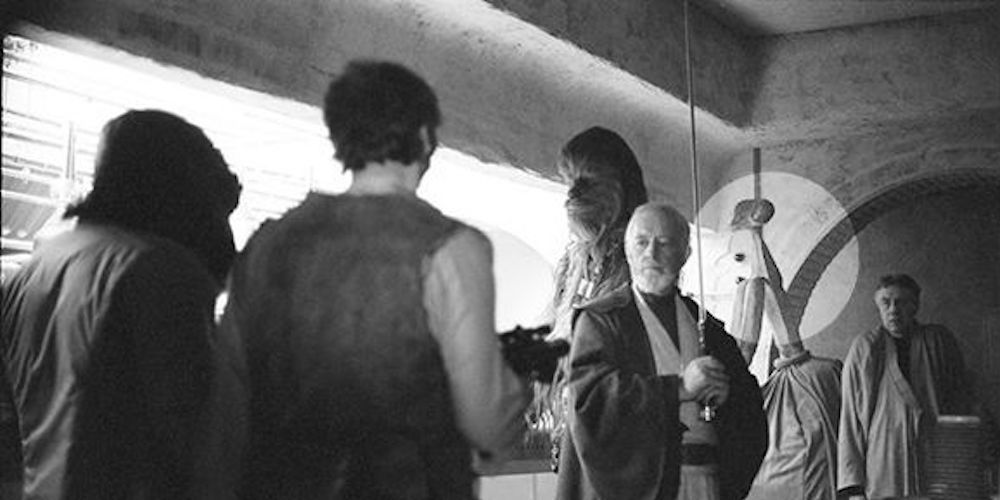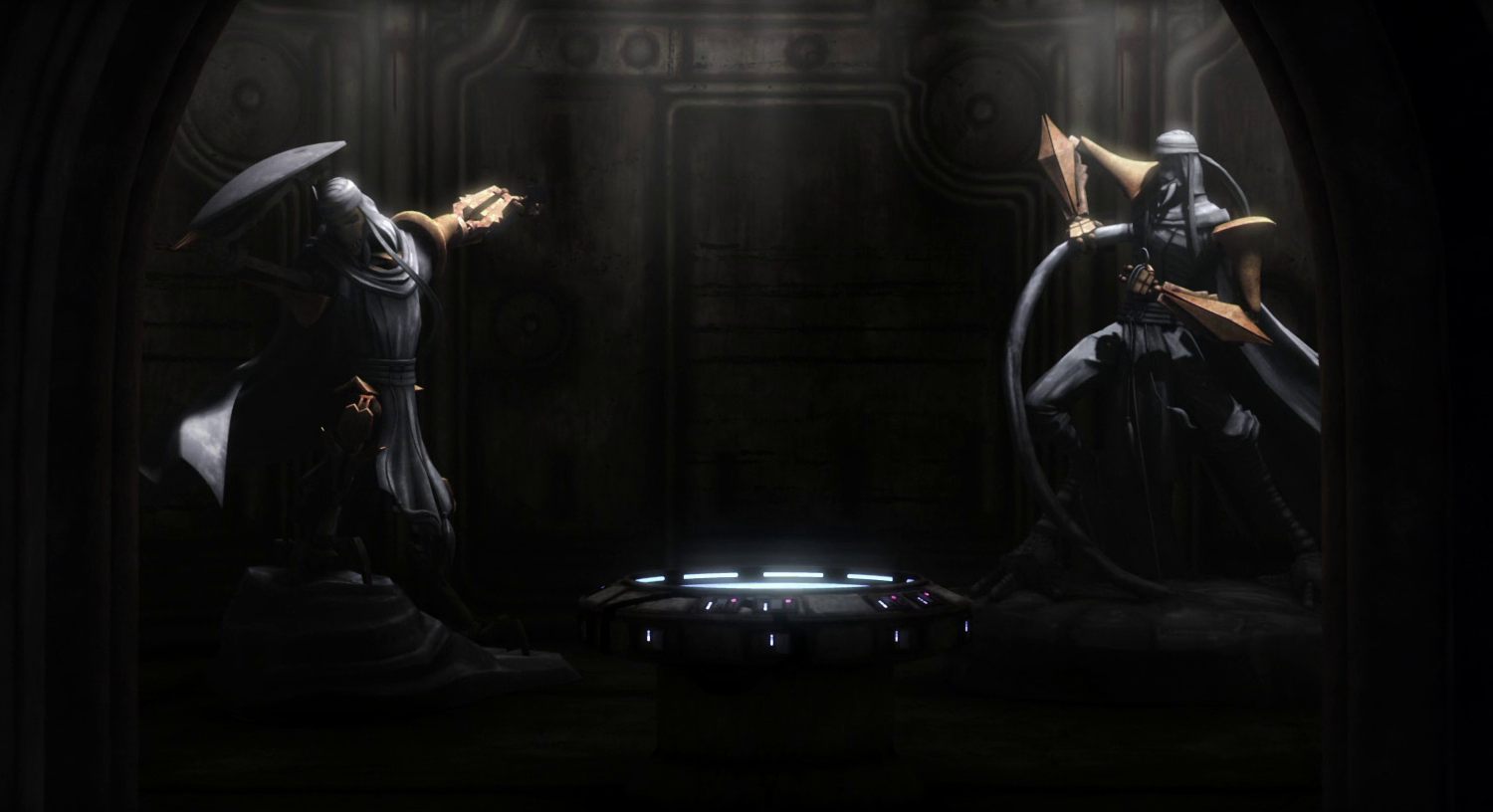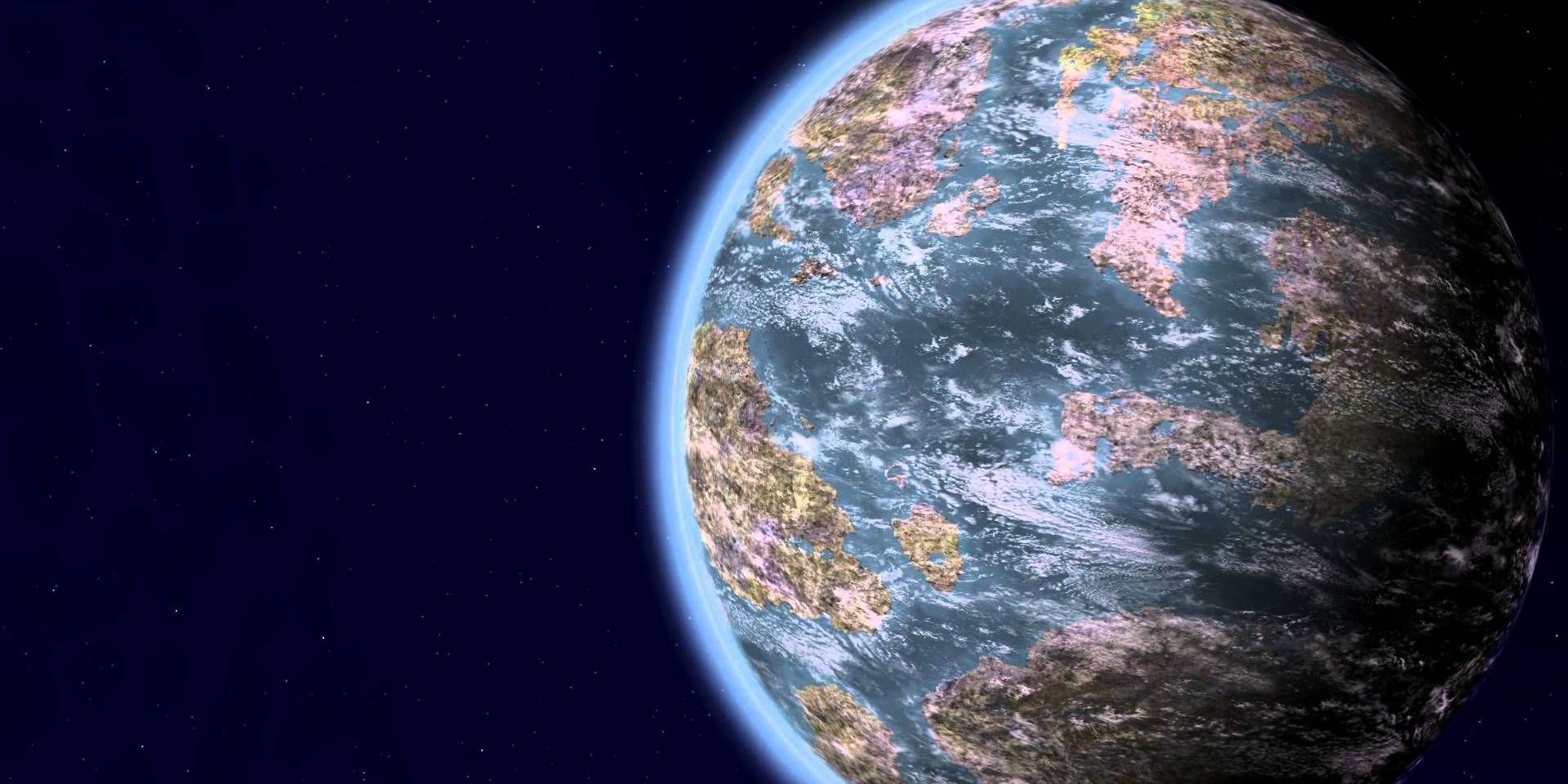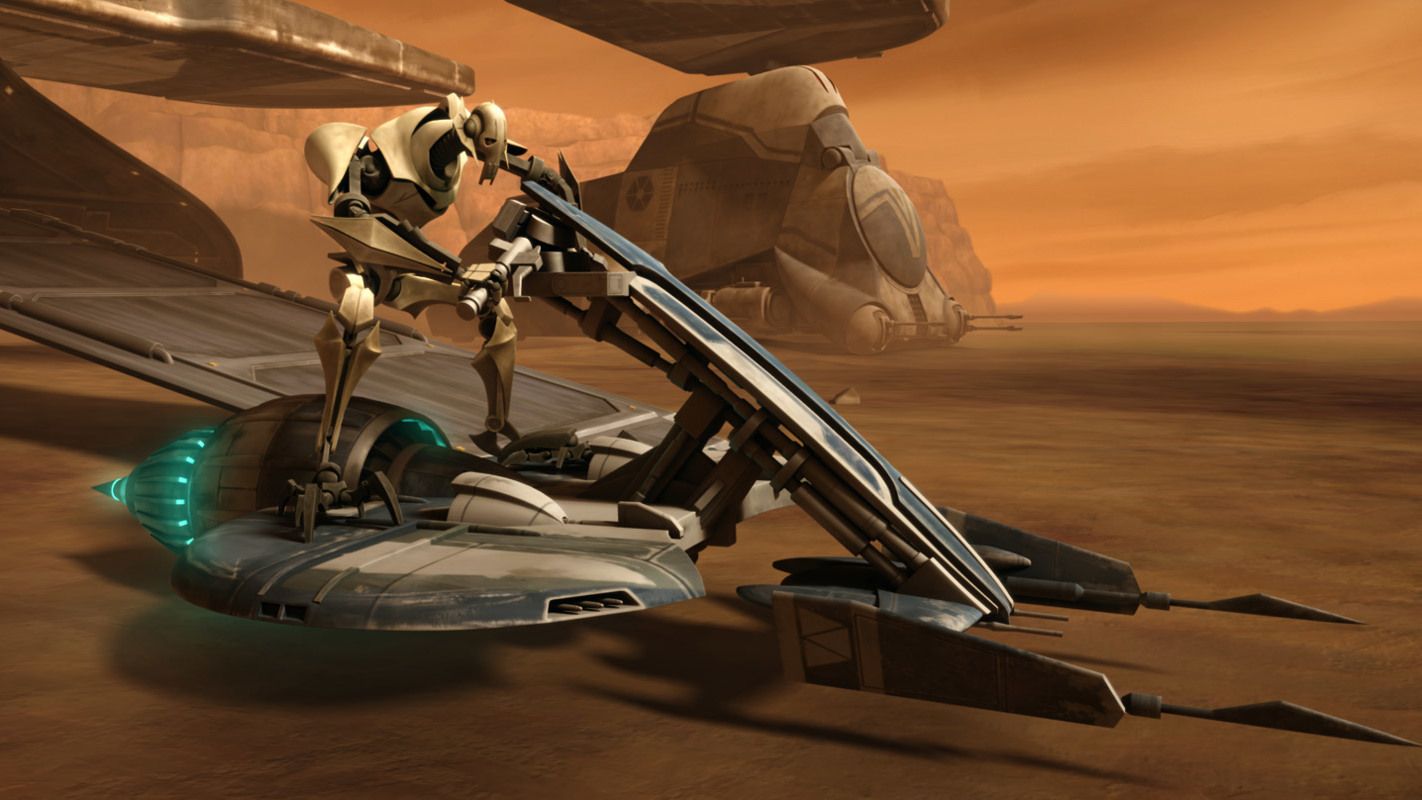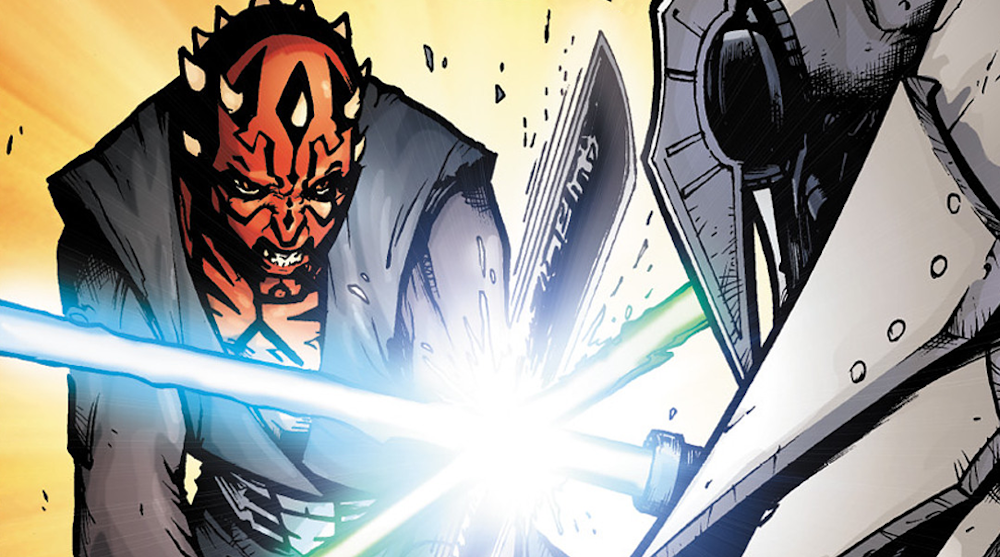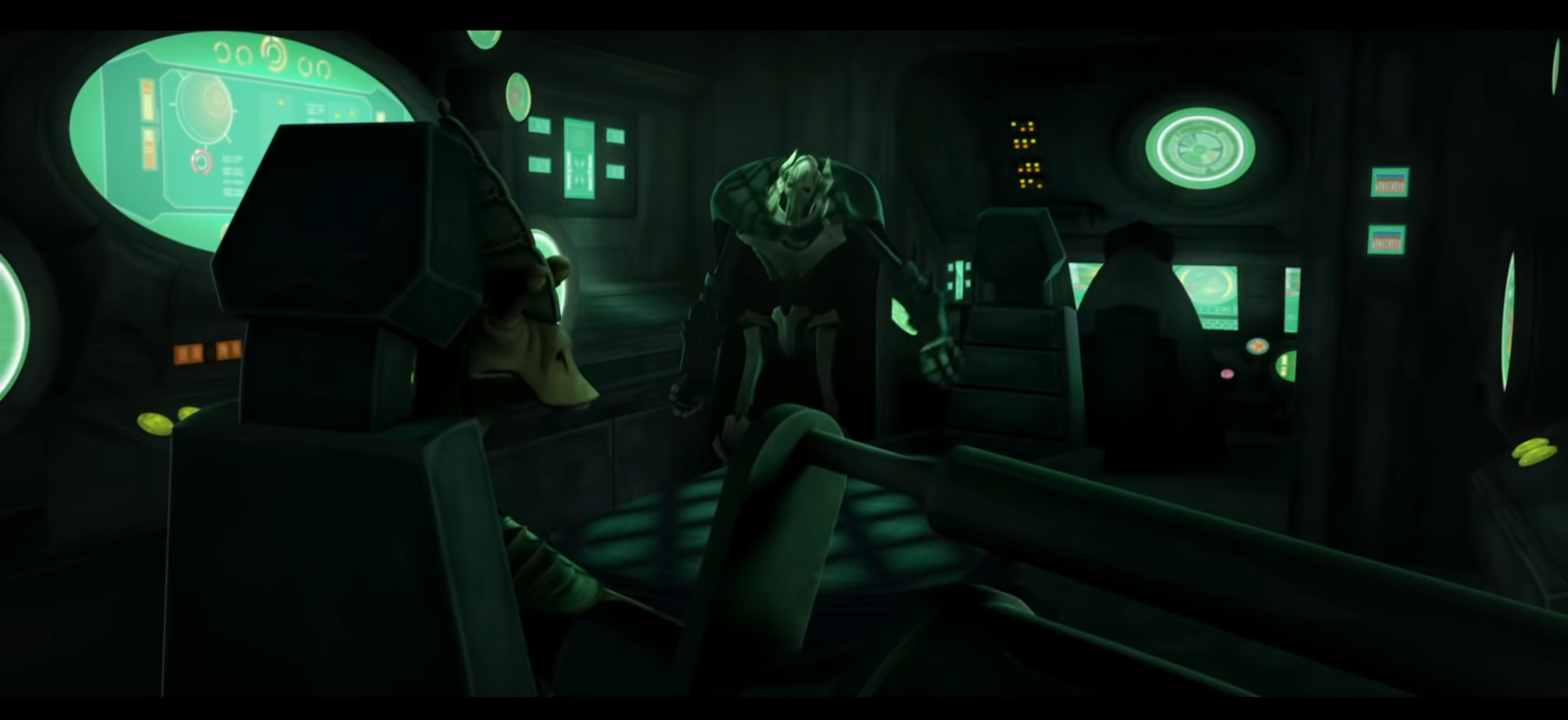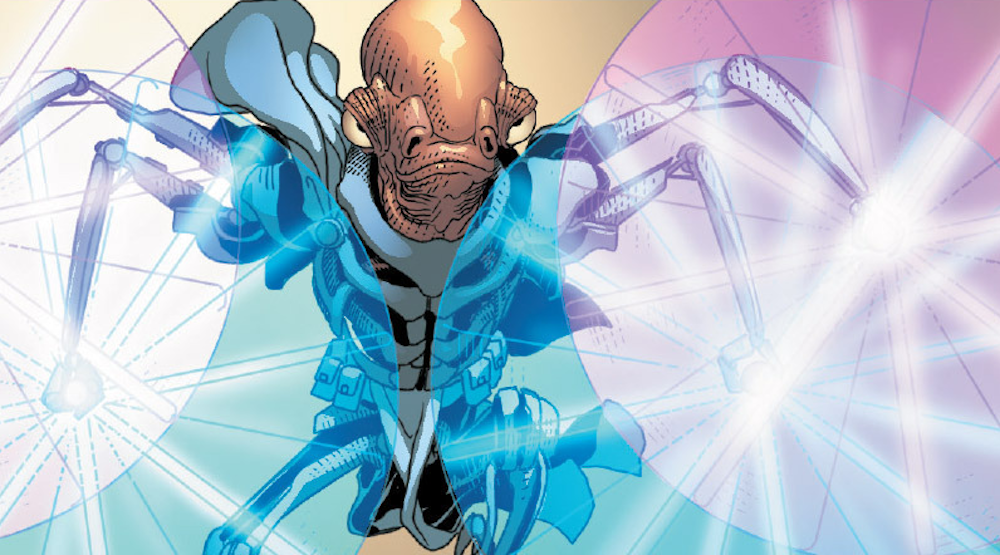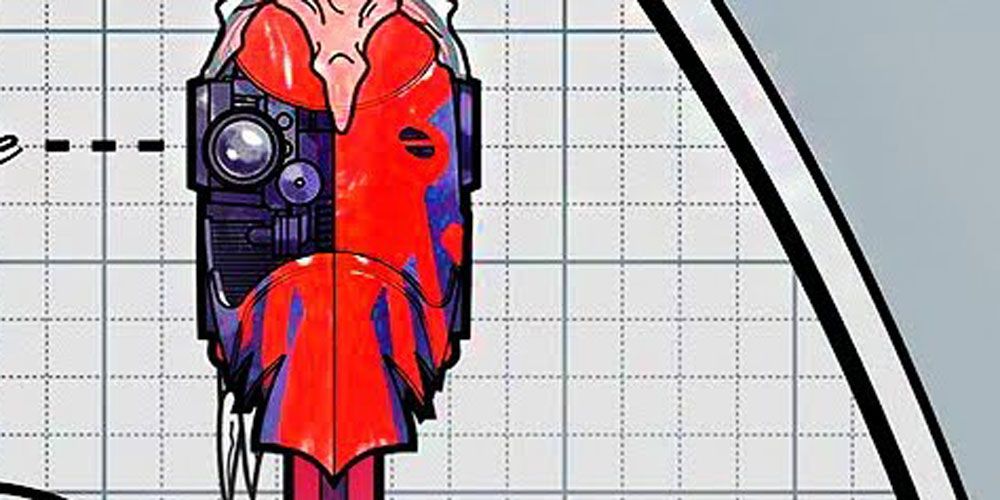How much do Star Wars fans think about General Grievous these days? Disney has been decidedly de-emphasizing the prequel era of Star Wars as of late. In fan discussions about the prequels, Darth Maul gets far more love. Even in Episode III itself, he's majorly overshadowed by Palpatine's wild displays of power and Anakin's transformation into Darth Vader as far as memorable villainy goes. Much of the content developing Grievous as a character in the Expanded Universe has now been deemed non-canonical "Legends" material. Fortunately for the cyborg lightsaber collector's legacy, General Grievous has just become a new playable character in the Star Wars: Battlefront II video game, and the upcoming new Star Wars: The Clone Wars season on the Disney+ streaming site might feature him even more.
Notable on first impressions for a combination of a cool, intimidating design, an extremely on-the-nose name and a strange vocal tic (we'll get into the backstory of his trademark cough over the course of this article), there's a lot more to General Grievous that even serious hardcore Star Wars fans might not be aware of. Like with many Star Wars characters, he changed a lot from George Lucas' first conception to his incarnation in the final film. Many details about Grievous in the current canon are mysterious, and even in the EU contradicted each other. Even in the slimmed down Disney-approved Star Wars universe, however, there are many details about General Grievous which might surprise those who only knew him from Revenge of the Sith or casually watching The Clone Wars.
15 HIS FIRST APPEARANCE IS NO LONGER CANON
The season two finale of Genndy Tartakovsky's traditionally animated Star Wars: Clone Wars miniseries was a must-see for any Star Wars-loving kid in 2004. Why? It introduced us to General Grievous a year before Revenge of the Sith's release! As cartoon introductions of movie characters go, it goes without saying this was more than a few steps above Boba Fett's intro in The Star Wars Holiday Special.
The miniseries was deemed uncanonical even before Disney cleared out the EU. Lucas wanted to clear out the timeline for the 2008 CGI Star Wars: The Clone Wars series. While other Legends works are still in print, Genndy's Clone Wars unfortunately has been out of print for over a decade, likely due to rights issues with Cartoon Network.
14 WAS ALMOST PLAYED BY GARY OLDMAN
Academy Award-winning character actor Gary Oldman made his mark in the blockbuster world with roles such as Sirius Black in Harry Potter and Comissioner Gordon in The Dark Knight trilogy. If not for a union conflict, he might have appeared in yet another iconic movie series in the 2000s by playing General Grievous in Revenge of the Sith.
Oldman, who is friends with Star Wars prequel producer Rick McCallum, sent in an audition tape for the role. He ultimately declined the part because RotS was not a Screen Actors Guild production, and technically it would have been illegal for him to take the part. Sound designer Matthew Wood ended up doing Grievous' voice for the movie.
13 ORIGINALLY A DISEMBODIED HEAD
General Grievous is a cyborg, but if not for the fleshy texture around his eyes and his final disembowelment, you might think he was a droid just by looking at him. Only parts of his head and organs remain organic. Early concept art for the character took the minimalism of his remaining body parts and emphasized it with creepy minimalist cybernetic parts as well.
This design by Ian McCaig presents Grievous as a disembodied head floating around with a mess of mechanical tentacles as its only appendages. This wasn't the only radical concept to be abandoned in the process of designing Grievous. At one point he was a child, but George Lucas felt people wouldn't take a child Grievous seriously as a fighter.
12 FINAL DESIGN INSPIRED BY "ROCK DRILL" SCULPTURE
Star Wars has always borrowed from culture both high and low, everything from classical myths to movie serials to modern art. The particular influence of modern art can be seen in the final design of General Grievous as well as of his battle droids. One look at Jacob Epstein's 1913 sculptue "Rock Drill" and you can easily see where the team at LucasFilm got their visual ideas.
Epstein initially designed "Rock Drill" as a celebration of advanced machinery and masculine power. As World War I went on, however, his own views of his art took a darker turn. Recontextualized, the "Torso in Metal from Rock Drill" took on a more tragic appearance, like a wounded robot soldier. No wonder this influenced Star Wars!
11 HAS GEORGE LUCAS' COUGH
Why does General Grievous have that heavy cough? The 2003 Clone Wars tried to explain it as Mace Windu giving him a chest injury. Later additions to the Expanded Universe offered an alternate explanation of it as a fault in his design as a cyborg and a precursor to Darth Vader's loud breathing.
The behind-the-scenes explanation is a lot simpler: George Lucas had a cough at work one day, and thought it would be fun to give one of the villains a cough. He actually recorded his own cough for use by the sound designers! So yes, mixed in with Matthew Wood's line readings and a ton of sound effects, General Grievous is actually partially voiced by George Lucas!
10 NUMBER OF FINGERS KEEPS CHANGING
In Revenge of the Sith, General Grevious normally has six fingers on each hand. When he splits his arms in two, that allows for three fingers per hand. It's a design that's elegant for lightsaber fighting, but not quite practical to animate. Therefore, both of the animated series he's appeared in have changed and simplified the design, changing his number of fingers.
The 2003 Clone Wars drew him with five fingers per hand, as the movie design had not yet finalized. It resolved the arm splitting issue by making his middle fingers split into two when his arms split open. The 2008 The Clone Wars streamlined the design so he only had four fingers per hand normally, two per hand when arms are split.
9 BACKSTORIES INTENTIONALLY CONTRADICTORY
Grievous' number of fingers isn't the only inconsistency in how he's been portrayed across different media. The nature of how he became a cyborg in the first place varies between different sources. There's agreement he was originally a Kaleesh warrior named Qymaen jai Sheelal, but his transformation isn't so widely agreed upon.
Originally it was the result of an accident, but The Clone Wars retconned his cyborg surgery as a voluntary procedure in attempt to gain Jedi-like abilities. In the book Star Wars: The Essential Guide to Warfare, writer Jason Fry says trying to reconcile these two differing accounts is a cop-out, and instead this must be treated as a historical debate within the Star Wars universe.
8 FOUGHT ENSLAVEMENT BY THE HUK
Did you ever notice that giant praying mantis-like creature in the background of the Mos Eisley Cantina in A New Hope? That species is officially called a Yam'rii, but the Kaleesh call them the Huk after the name of their planet. Turns out that, in Legends continuity at least, the Huk enslaved the Kaleesh.
Grievous was a freedom fighter for the Kaleesh against their insectoid oppressors. Planet Huk was part of the Galactic Republic and Kalee wasn't, so Grievous pretty much had no choice but to side with the Sith in order to gain support in his fight. Who knew General Grevious had such a sympathetic motivation?
7 CONSIDERED A GOD BY HIS PEOPLE
Details about the Kaleesh culture in current canon are scarce, but in Legends, it can be described succinctly as both spiritual and warlike. These two qualities heavily intermingled, to the point wherein the most ruthless warriors were elevated to the status of gods.
Even before he was known as Grievous, Qymaen jai Sheelal was among the greatest warriors the Kaleesh ever had. He was already a master sniper at age eight; his body count was so high he'd already achieved godhood by age 22. Given that, it's no wonder he become so self-involved and has giant statues of his past self in his lair on Vassek 3.
6 ONLY APPEARANCE OF HOME PLANET IS IN TABLETOP GAME
Because The Clone Wars remains canon, we still know that General Grievous was a Kaleesh in the current continuity. Much of the details about his home and culture, however, remain nebulous. The planet Kalee is still referenced in canon video games, but the only actual visual depiction of it in a canon source is one you would least expect. It's a tabletop RPG for The Force Awakens.
Star Wars: The Force Awakens Beginner Game, released in 2016, is the fourth of Fantasy Flight Games' cross-compatible Star Wars RPGs. While the characters and factions are those from The Force Awakens, its map includes far more locations than included in the film, marking the first Disney canon appearances of dozens of planets.
5 CHOICE OF VEHICLES ROOTED IN VANITY
All powerful leaders, evil ones most especially, know there's power in aesthetics... at least when it comes to humans. General Grievous' choice of speedster is supposedly to present an image of power and ruthlessness to inspire his troops. When his troops are all droids too dumb to even comprehend that, it becomes clear Grievous only picked this vehicle for his own ego (which must be pretty high, having been deemed a god and all).
The official Star Wars Databank describes this as his justification for the speedster, but this logic would seem to apply to many of his chosen vehicles. Seriously, he customized his own ship and called it the Soulless One. Certainly seems like a man in love with his own evilness.
4 DOES NOT GET ALONG WITH DARTH MAUL
Just because you're on the Dark Side doesn't mean you're all friends sharing cookies. Darth Sidious rejected Darth Maul as apprentice, but General Grievous' feelings towards the disgraced Zabrek where even harsher. In Jeremy Barlow and Juan Frigeri's Marvel miniseries Darth Maul - Son of Dathomir, Grievous and Maul face off.
Grievous was sent to capture Maul alive. That last condition took some serious convincing, as Grievous didn't feel Maul even deserved to live! Though Grievous tried to weaken Maul's sprits by taunting him, the two were evenly matched in battle. Grievous failed to capture Maul, and Maul would in fact return to capture Grievous! Dooku would ultimately rescue the General.
3 WAS DEFEATED BY JAR JAR BINKS (SERIOUSLY)
While this detail is better known to some Star Wars fans due to happening in the fourth season of The Clone Wars, anyone who wasn't watching the show is probably in disbelief reading this. But yes, Jar Jar Binks not only did something useful, but was instrumental in fighting General Grievous!
Posing as the Gungan traitor Boss Lyonie, Jar Jar managed to put his skill of being annoying and distracting to amazing use. As he wasted Grievous' time with "negotiations," the rest of the Gungan Grand Army completely decimated Grievous' forces! Though Grievous would retaliate and take out many Gungans, including General Tarpals, the Grand Army was able to capture Grievous thanks to Jar Jar.
2 SAME CYBERNETICS USED FOR VADER'S INTENDED REPLACEMENT
Darth Vader has such prominence in Star Wars mythology it's easy to forget he was a replaceable official in the Empire. Powerful, yes, but still just a lackey of Emperor Palpatine, who was prepared in case Vader failed. In Kieron Gillen and Salvador Larroca's run on the Marvel Star Wars: Darth Vader comics, we meet several potential replacements.
One notable option for the next Vader was Karbin, a Mon Calamari who fought in the Clone Wars. His cybernetic body, built by Doctor Cylo, was modeled after the design for General Grievous' body, but with some technological improvements. Karbin was assigned to track Luke Skywalker in the aftermath of the Death Star explosion.
1 DOWNLOADED INTO MISTER BONES AFTER ENDOR
The legacy of General Grievous lives on long after his defeat by Obi-Wan. In the Aftermath book trilogy by Chuck Wendig, it's heavily implied some part of Grievous lives on quite literally. Businessman and future Resistance fighter Temmin "Snap" Wexley hints that he included some of General Grievous' programming in his droid bodyguard Mister Bones.
The clearest evidence of a connection between Bones and Grievous is that they share identical styles of movement. Bones also shares his predecessor's bloodlust. Despite emerging from part of Grievous' programming, Bones is his own droid with his own independent personality, and he ultimately sides with his creator and the New Republic.

